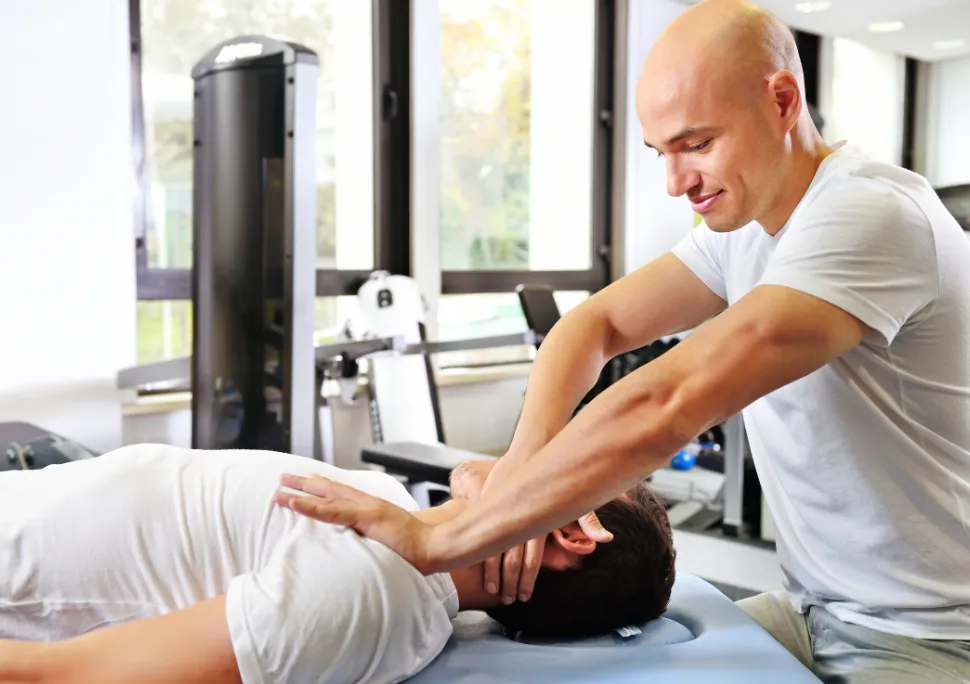Neck pain can stem from stress, poor posture, or even physical strain. Often, it affects mobility and makes daily tasks challenging. By understanding the causes and exploring potential solutions, you can take steps toward effective relief. Here’s information on neck pain with at-home and professional strategies to manage it:
Diagnosing Neck Pain
For some, neck pain arises from muscle strain caused by repetitive movements or prolonged computer use. Others may experience pain from underlying conditions, like arthritis, herniated discs, or injuries. Some common symptoms include stiffness, soreness, and sharp discomfort.
It is key to monitor the severity and duration of your symptoms. If your pain persists for more than a week or is accompanied by tingling, numbness, or headaches, consulting a healthcare professional is advised. These symptoms may indicate a more serious condition that requires further investigation.
At-Home Methods for Relief
For mild to moderate cases of neck pain, at-home methods can provide significant relief. Gentle stretching exercises help relieve tension and improve flexibility in the neck muscles. Always perform stretches gradually to avoid further straining the muscles, and stop immediately if you feel pain.
Stretches
Some simple movements that stretch the neck include:
- Neck tilts: Sit upright and slowly tilt your head forward, bringing your chin toward your chest. Hold for 5-10 seconds and return to the starting position.
- Side stretches: Slowly tilt your head toward one shoulder without lifting the other. Hold for 10 seconds before switching to the opposite side.
- Shoulder rolls: Rotate your shoulders forward and backward in a circular motion to release tension in surrounding areas.
Heat and Ice Therapy
Alternating between heat and ice therapy can reduce pain and swelling. Ice packs are particularly effective for inflammation caused by overuse or minor injury, as they numb the area and reduce swelling. Apply an ice pack wrapped in a cloth to the sore area for 15-minute intervals. Heat therapy helps relax tight or strained muscles. Use a heating pad or warm towel and apply it to the neck for 15-20 minutes. Have the heat source be warm, not excessively hot, to avoid burns.
Massages
Massaging the neck can help alleviate muscle tension and improve blood flow, facilitating a quicker recovery. Using your fingers, gently apply pressure to the sore areas in small, circular movements. If massaging proves difficult on your own, a handheld massage device or enlisting the help of a partner may make this process easier. Avoid exerting too much pressure, as this could worsen your discomfort.
Medical Solutions for Relief
When at-home methods are insufficient, turning to medical solutions may be necessary. Healthcare professionals offer a range of treatments tailored to the underlying cause of neck pain. Advanced interventions are only recommended for severe cases where other treatments have been ineffective. Some advanced solutions for chronic neck pain are:
- Radiofrequency Ablation
- Cervical Fusion
- Spinal or Nerve Block Injections
- Disk Replacement
Physical therapy focuses on targeted exercises designed to strengthen the neck and improve posture. Physical therapists also guide patients in correcting movement patterns to avoid recurring issues. Pain management techniques may include medications, though these should always be used as prescribed by a physician. Over-the-counter options can help alleviate temporary discomfort.
Schedule an Appointment Today
If you’ve been struggling with persistent or severe neck pain, it’s time to seek professional help. A healthcare provider can help you determine the cause and outline an appropriate treatment plan. Whether your pain is due to minor tension or a more complex issue, early intervention can make a significant difference. Schedule an appointment with a specialist to start your path toward relief.
- crypto30x com zeus Review: Is It the Best Platform for U.S. Crypto Traders in 2025?
- Super Scatter Juara100.org Medal: The Ultimate Guide to Winning Big in Online Gaming
- Ziuqyazhmizz: Ancient Slavic Practice Explained – Meaning, Benefits & Daily Life Guide
- Zaxtexporoz: A Simple Guide to Xcer Tools, Digital Trends, and Smart Solutions
- Casîo: A Symbol of Innovation, Durability, and Global Trust




